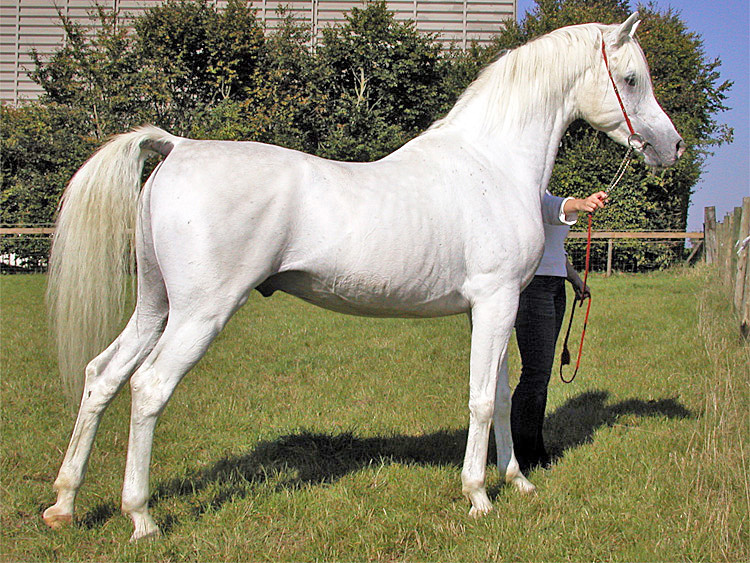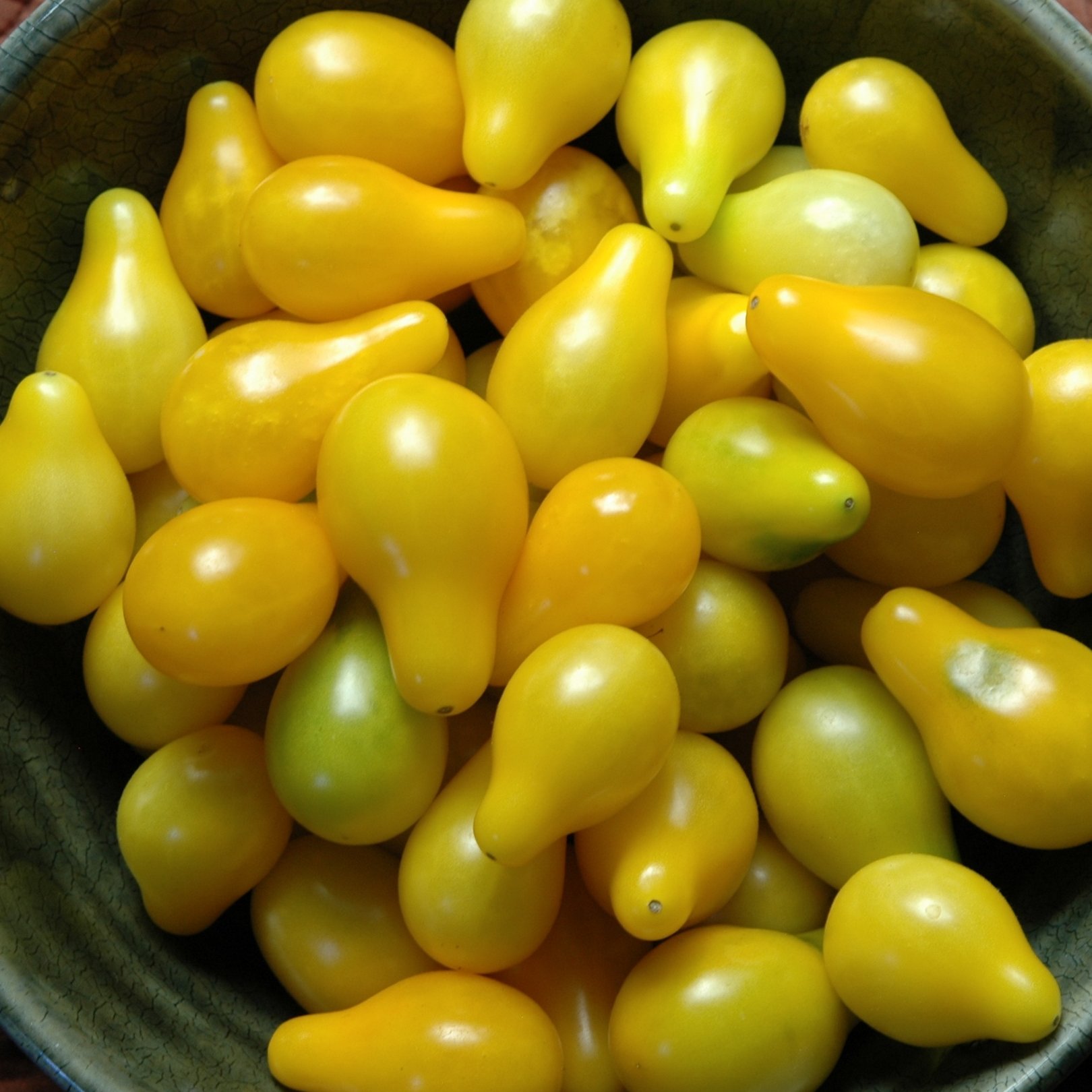|
Heirloom Tomato
An heirloom tomato (also called heritage tomato in the United Kingdom, UK) is an Open pollination, open-pollinated, non-hybrid heirloom plant, heirloom cultivar of tomato. They are classified as family heirlooms, commercial heirlooms, mystery heirlooms, or created heirlooms. They usually have a shorter shelf life and are less disease resistant than hybrids. They are grown for various reasons: for food, historical interest, access to wider varieties, and by people who wish to save seeds from year to year, as well as for their taste. Taste Many heirloom tomatoes are sweeter and lack a genetic mutation that gives tomatoes a uniform red color at the cost of the fruit's taste. Varieties bearing that mutation which have been favored by industry since the 1940s - that is, tomatoes which are not heirlooms - feature fruits with lower levels of carotenoids and a decreased ability to make sugar within the fruit. Cultivars Heirloom tomato cultivars can be found in a wide variety of color ... [...More Info...] [...Related Items...] OR: [Wikipedia] [Google] [Baidu] |
Green Zebra
Green Zebra is a tomato cultivar with characteristic dark green and yellow stripes. Newer variations blush reddish instead of yellow when ripe. It is more tart (described as 'spicy' and 'zingy') than a regular tomato, and it is an early cultivar. Compared to other tomato varieties, it can produce somewhat mealy fruits depending on growing conditions. Green Zebra was bred by Tom Wagner of Everett, Washington, and introduced in his Tater-Mater Seed Catalog in 1983. He first came up with the idea in the 1950s. Usually, green tomatoes are considered unripe and discarded or fried. However, Wagner was intrigued by the idea of a green tomato that was ready to eat. There is some controversy as to whether Green Zebra should be considered an heirloom tomato An heirloom tomato (also called heritage tomato in the UK) is an open-pollinated, non-hybrid heirloom cultivar of tomato. They are classified as family heirlooms, commercial heirlooms, mystery heirlooms, or created heirlooms. The ... [...More Info...] [...Related Items...] OR: [Wikipedia] [Google] [Baidu] |
List Of Tomato Cultivars
There are more than 10,000 tomato varieties available. __NOTOC__ Table of tomatoes See also * Lists of cultivars * List of tomato dishes Notes # ::Some tomato cultivars will be marked with disease resistance codes, signifying that the plant is immune to a certain disease shown below: ::*A — Alternaria stem canker ::*F — Fusarium wilt ::*FF — Fusarium races 1 and 2 ::*FFF — Fusarium races 1, 2 and 3 ::*N — Nematodes ::*T — Tobacco mosaic virus ::*St — Stemphylium gray leaf spot ::*V — Verticillium wilt Verticillium wilt is a wilt disease affecting over 350 species of eudicot plants. It is caused by six species of '' Verticillium'' fungi: ''V. dahliae'', ''V. albo-atrum'', ''V. longisporum'', ''V. nubilum'', ''V. theobromae'' and ''V. tricorp ... References External links Non-profit discussion forums for tomato growers with special emphasis on heirloom varieties {{DEFAULTSORT:Tomato Cultivars Lists of cultivars * Tomatoes ... [...More Info...] [...Related Items...] OR: [Wikipedia] [Google] [Baidu] |
Heirloom Plant
An heirloom plant, heirloom variety, heritage fruit (Australia and New Zealand), or heirloom vegetable (especially in Ireland and the UK) is an old cultivar of a plant used for food that is grown and maintained by gardeners and farmers, particularly in isolated or ethnic minority communities of the Western world. These were commonly grown during earlier periods in human history, but are not used in modern large-scale agriculture. In some parts of the world, it is illegal to sell seeds of cultivars that are not listed as approved for sale. The Henry Doubleday Research Association, now known as Garden Organic, responded to this legislation by setting up the Heritage Seed Library to preserve seeds of as many of the older cultivars as possible. However, seed banks alone have not been able to provide sufficient insurance against catastrophic loss. In some jurisdictions, like Colombia, laws have been proposed that would make seed saving itself illegal. Many heirloom vegetables have k ... [...More Info...] [...Related Items...] OR: [Wikipedia] [Google] [Baidu] |
F1 Hybrid
An F1 hybrid (also known as filial 1 hybrid) is the first filial generation of offspring of distinctly different parental types. F1 hybrids are used in genetics, and in selective breeding, where the term F1 crossbreed may be used. The term is sometimes written with a subscript, as F hybrid. Subsequent generations are called F, F, etc. The offspring of distinctly different parental types produce a new, uniform phenotype with a combination of characteristics from the parents. In fish breeding, those parents frequently are two closely related fish species, while in plant and animal breeding, the parents often are two inbred lines. Gregor Mendel focused on patterns of inheritance and the genetic basis for variation. In his cross-pollination experiments involving two true-breeding, or homozygous, parents, Mendel found that the resulting F1 generation was heterozygous and consistent. The offspring showed a combination of the phenotypes from each parent that were genetically dominant. ... [...More Info...] [...Related Items...] OR: [Wikipedia] [Google] [Baidu] |
Purebred
Purebreds are "cultivated varieties" of an animal species achieved through the process of selective breeding. When the lineage of a purebred animal is recorded, that animal is said to be "pedigreed". Purebreds breed true-to-type which means the progeny of like-to-like purebred parents will carry the same phenotype, or observable characteristics of the parents. A group of purebreds is called a pure-breeding line or strain. True breeding In the world of selective animal breeding, to "breed true" means that specimens of an animal breed will breed true-to-type when mated like-to-like; that is, that the progeny of any two individuals of the same breed will show fairly consistent, replicable and predictable characteristics, or traits with sufficiently high heritability. A puppy from two purebred dogs of the same breed, for example, will exhibit the traits of its parents, and not the traits of all breeds in the subject breed's ancestry. However, breeding from too small a gene pool, ... [...More Info...] [...Related Items...] OR: [Wikipedia] [Google] [Baidu] |
Yellow Pear
Pear tomato or teardrop tomato is the common name for any one in a group of indeterminate heirloom tomatoes. There are yellow, orange, and red varieties of this tomato; the yellow variety being most common. They are generally sweet, and are in the shape of a pear, but smaller. They are heirlooms and have 3 common other names, such as the "Red/Orange/Yellow Pear Tomato Plants." History The tomato originates from the Americas and was introduced to the Europe in the 16th century. The pear tomato originated in Europe in the 18th century.Dr. Carolyn Male, 100 Heirloom Tomatoes for the American Garden, http://tomatogardener.blogspot.com/2010/07/tomato-profile-yellow-pear.html, Retrieved January 28, 2011. Within the next century both England and the United States were introduced to the fruit. In 1752 records show the English using it for flavoring soups. The first recorded yellow pear tomatoes were grown in Europe in 1805. In 1825 the Hudson's Bay Company, Fort Vancouver, onc ... [...More Info...] [...Related Items...] OR: [Wikipedia] [Google] [Baidu] |
Three Sisters (tomato)
The Three Sisters is a variety of tomato, so named because the plant grows vegetables in three different shapes, each given plant producing only one of the three: * a large single-pleated size (most common) * a more cylindrical shape, like a Roma tomato * a pleated, flattened globe type References See also * List of tomato cultivars There are more than 10,000 tomato varieties available. __NOTOC__ Table of tomatoes See also * Lists of cultivars * List of tomato dishes Notes # ::Some tomato cultivars will be marked with disease resistance codes, signifying that the plant ... Tomato cultivars {{fruit-stub ... [...More Info...] [...Related Items...] OR: [Wikipedia] [Google] [Baidu] |
San Marzano Tomato
A San Marzano tomato is a variety of plum tomato. Description Compared to the Roma tomato, San Marzano tomatoes are thinner and more pointed. The flesh is much thicker with fewer seeds, and the taste is stronger, sweeter, and less acidic. The San Marzano vines are an indeterminate type vine, and have a somewhat longer season than other paste tomato varieties, making them particularly suitable for warmer climates. As is typical of heirloom plants, San Marzano is an open-pollinated variety that breeds true from generation to generation, making seed saving practical for the home gardener or farmer. Commercial production and use Heirloom plant conservationist Amy P. Goldman calls the San Marzano "the most important industrial tomato of the 20th century"; its commercial introduction in 1926 provided canneries with a "sturdy, flawless subject, and breeders with genes they'd be raiding for decades." Though commercial production of the San Marzano variety is most closely associa ... [...More Info...] [...Related Items...] OR: [Wikipedia] [Google] [Baidu] |
Redcurrant
The redcurrant or red currant (''Ribes rubrum'') is a member of the genus ''Ribes'' in the gooseberry family. It is native to western Europe. The species is widely cultivated and has escaped into the wild in many regions. Description ''Ribes rubrum'' is a deciduous shrub normally growing to tall, occasionally , with five-lobed leaves arranged spirally on the stems. The flowers are inconspicuous yellow-green, in pendulous racemes, maturing into bright red translucent edible berries about diameter, with 3–10 berries on each raceme. An established bush can produce of berries from mid- to late summer. Phytochemicals Redcurrant fruits are known for their tart flavor, a characteristic provided by a relatively high content of organic acids and mixed polyphenols. As many as 65 different phenolic compounds may contribute to the astringent properties of redcurrants, with these contents increasing during the last month of ripening. Twenty-five individual polyphenols and other n ... [...More Info...] [...Related Items...] OR: [Wikipedia] [Google] [Baidu] |
Paul Robeson Tomato
The Paul Robeson tomato is a Russian heirloom tomato that was named after Paul Robeson, the American singer, actor and human-rights advocate. See also *List of tomato cultivars There are more than 10,000 tomato varieties available. __NOTOC__ Table of tomatoes See also * Lists of cultivars * List of tomato dishes Notes # ::Some tomato cultivars will be marked with disease resistance codes, signifying that the plant ... References {{Tomatoes Heirloom tomato cultivars ... [...More Info...] [...Related Items...] OR: [Wikipedia] [Google] [Baidu] |
Mortgage Lifter
Mortgage Lifter is the name given to a cultivar of tomato developed by Willam Estler of Barboursville, West Virginia, in 1922. He registered the name in 1932, several years before "Radiator Charlie" and his "Radiator Charlie's Mortgage Lifter". Robert Howard Estler, last remaining son of William Estler, died in October 2012. According to many sources on the Internet, the Mortgage Lifter was not developed by Willam Estler. Instead, it is said to have been developed by M.C. "Radiator Charlie" Byles in Logan, West Virginia. Byles is said to have developed it in the early 1930s. However, as mentioned above, Byles' and Estler's breeds are distinct cultivars. The original Mortgage Lifter is known for its mild sweet flavor, and can weigh as much as . Byles' and Estler's cultivars are only the most well-known of a number of Great Depression-era tomato breeds named "Mortgage Lifter". These were developed for the nursery plant market, and named after their presumably high saleability, wh ... [...More Info...] [...Related Items...] OR: [Wikipedia] [Google] [Baidu] |



